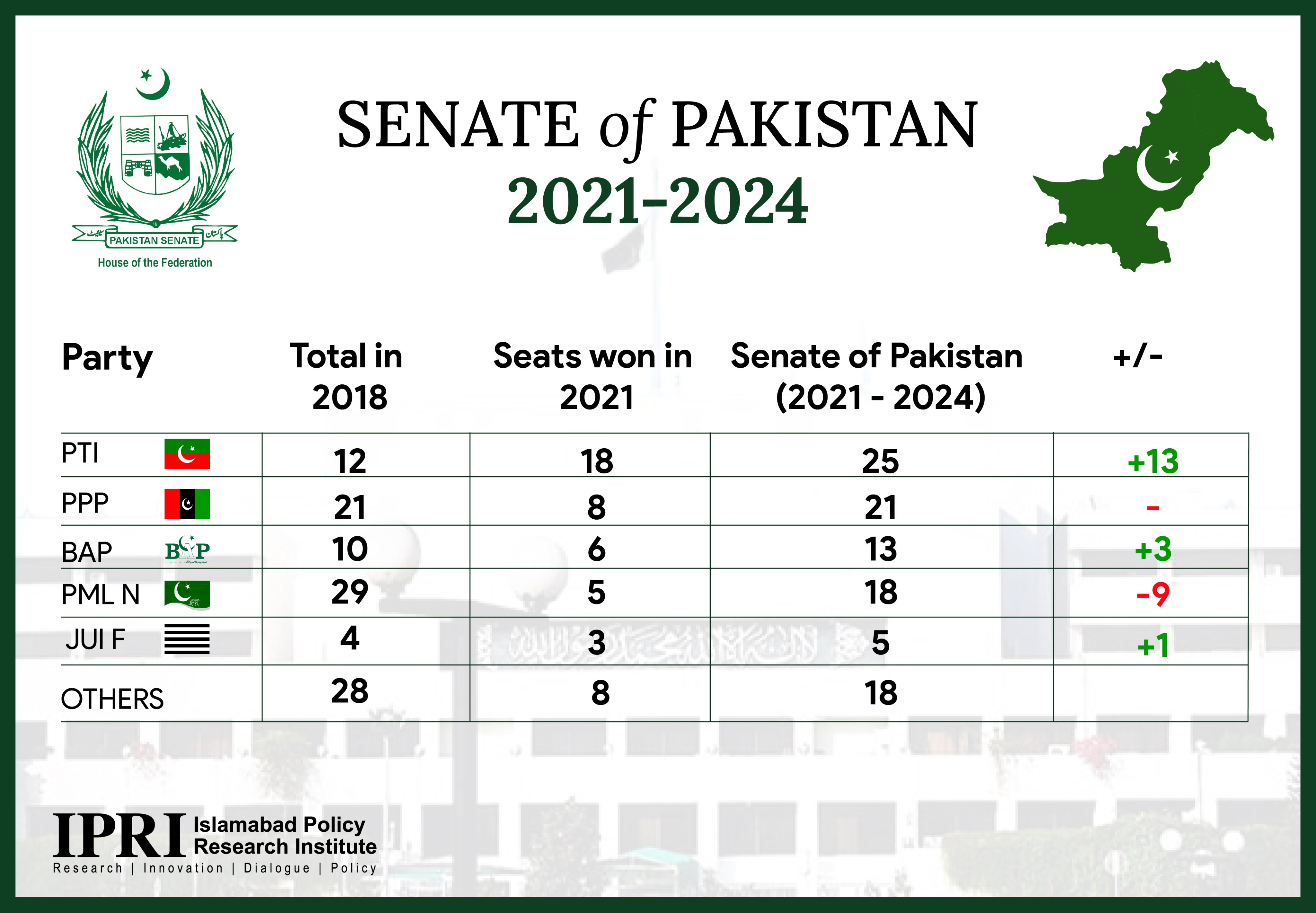Senate Elections in Pakistan – Explained
Elections:
Senate elections take place in accordance with Article 59 of the Constitution.
- Each of the four Provincial Assemblies elects fourteen Senators on general seats, four women, four technocrats including Ulema (religious scholars) and one on seat reserved for non-Muslims;
- All Members of National Assembly elect two Senators on general seats, one woman and one technocrat or Alim to represent the Federal Capital.
- Though seventeen seats have been allocated to women, there is no bar on women to seek elections on the other seats.
Note: The aggregate of the above two categories comes to be 96. However, because the Federally Administered Tribal Areas (FATA), which earlier had 8 seats in the Senate, have been merged with the Khyber Pakhtunkhwa province, this time, FATA’s four designated seats will not be voted on. Hence, polling will be held for 48 senators instead of on 52 vacant seats. So, the Senate from 2021 to 2024 shall comprise 100 members.


Election Procedure:
One man, one vote, for one candidate in the general elections. But that is not how it works in the Senate elections. Voting in the upper house of the parliament can be complicated and only involves our elected representatives. The Senate polls are held on the basis of a Single Transferable Vote System (STV), a proportional representational system first introduced in the 19th century by British mathematician Thomas Wright Hill. Later, Northern Ireland, the Republic of Ireland, Malta, Scotland, Australia and Germany began to use this system to elect legislators. The STV made its way to the subcontinent prior to independence. It was adopted in some elections of the Municipal Board and District Boards of the upper house of the provinces, according to the Election Commission of Pakistan’s website. However, only after 1973, it became the standard voting practice for the Senate in Pakistan. On the day of the vote, members of the national and provincial assemblies will be given four slips of paper and they will name their candidates on the basis of priority, therefore, 1,2,3.
Learning its Maths:
The maths to determine the exact quota of the vote each candidate should receive is worked out by diving the total value of votes. Take Khyber Pakhtunkhwa. There are 124 electors and each vote is assigned the value of 100.
124 x 100 = 1,2400
Divide this by the number of vacant seats, 7 + 1 =8.
The total is now 1,550. Then, add 1 to the final answer, which makes it 1,551. Now remove the last two digits and we are left with 15, add another one to it and we will have 16. Which means that each candidate in KP must get 16 votes.
Using the same formula, 171 votes in National Assembly will be required for a Senator to be elected from Islamabad, 46 for Punjab, 21 for Sindh and 8 for Balochistan.
When a candidate gets the required priority votes, his remaining Priority 1 votes will be transferred to the candidate on 2nd priority. A process that continues until the required number of Senators is elected.

